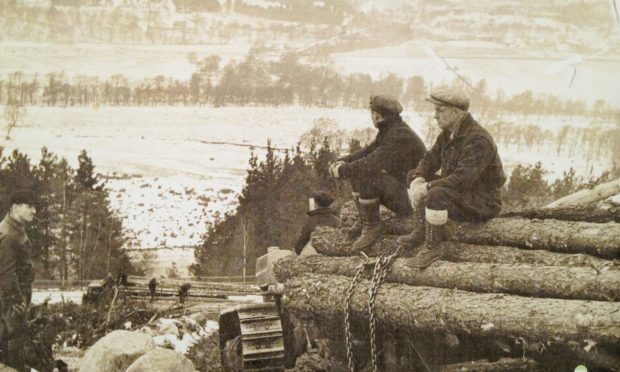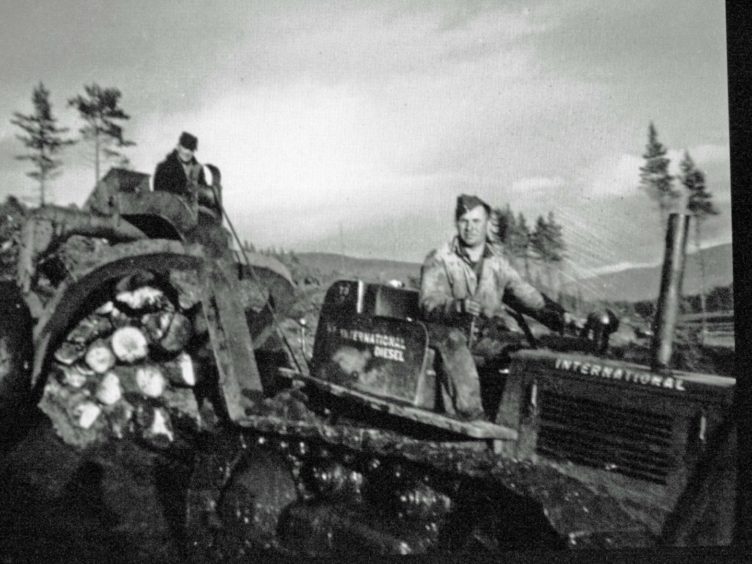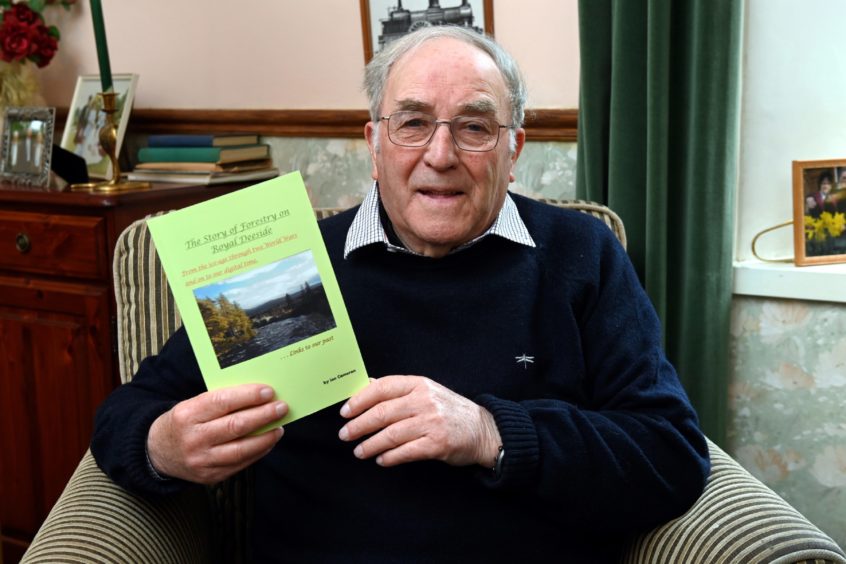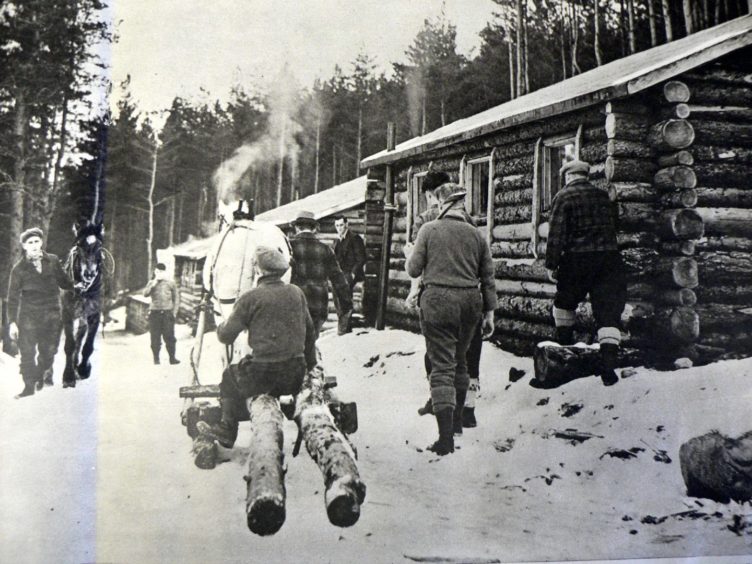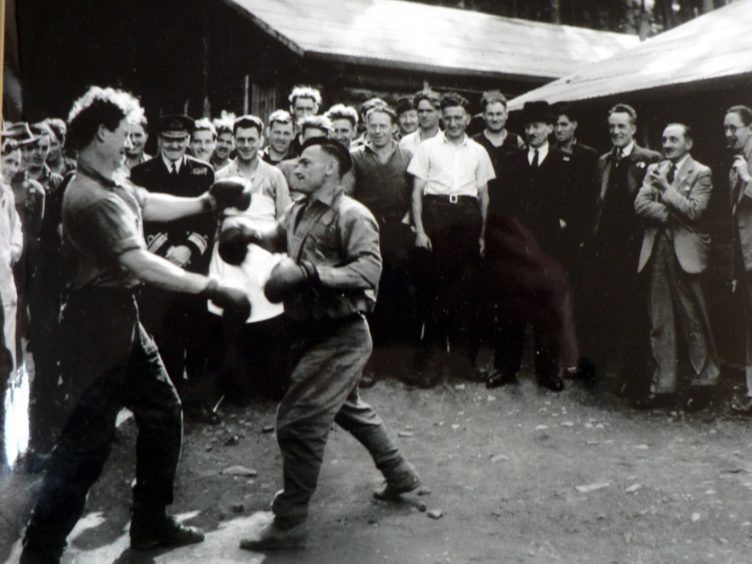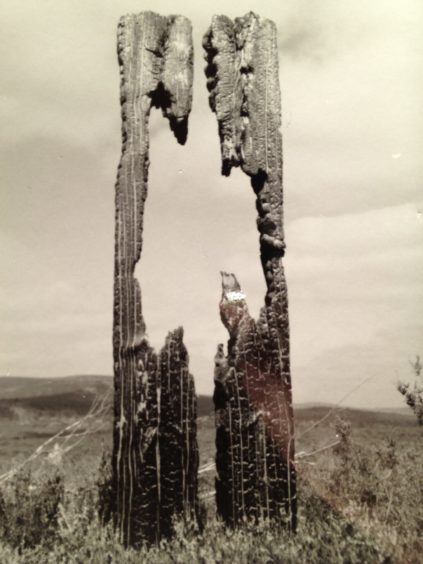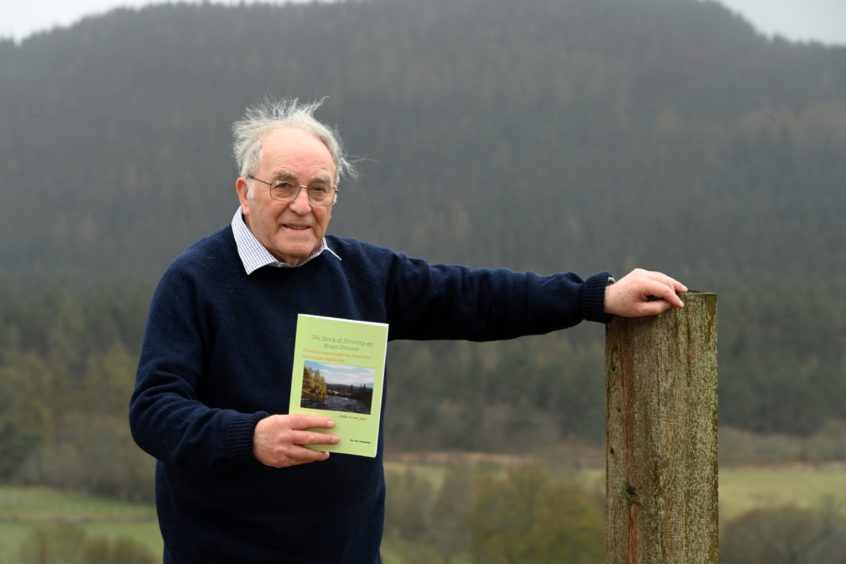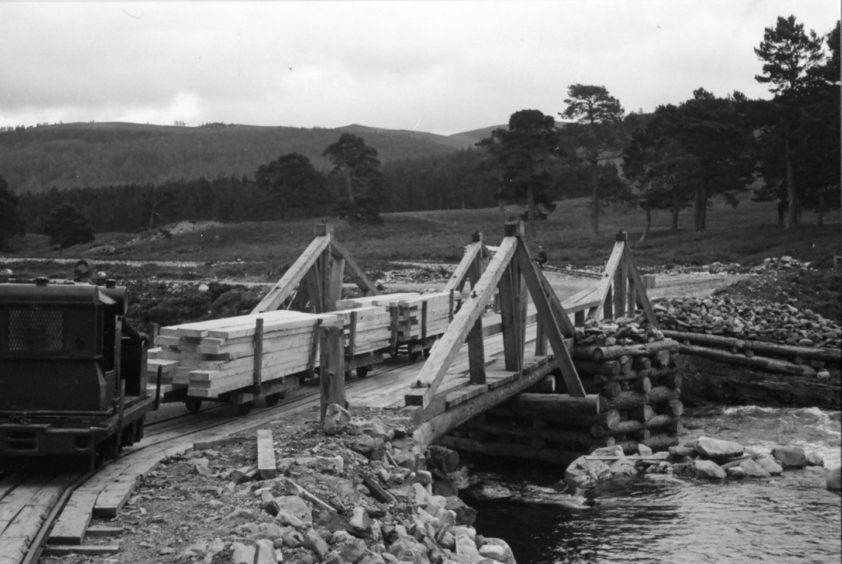He was just a small boy when he lived through the hectic years of the Second World War in Ballater.
Yet Ian Cameron has never forgotten the arrival of thousands of Canadians and Newfoundlanders in Deeside to boost the Allied effort and how they brought with them such marvels of machinery as crawler tractors, four-wheel-drive trucks, high lead winches and modern sawmills.
Ian, who is now 83, but retains a fascination for the minutiae of history and heritage, has written a new book The Story of Forestry on Royal Deeside – and it’s a riveting account which stretches all the way from the Ice Age through two global conflicts and into the digital sphere.
We visited the former Forestry Commission mechanic at his home in Ballater and talked to him about his passion for the environs in which he has grown up and thrived, stretching all the way back to when he was a child, rubbing shoulders with the many Canadians and Latvians who journeyed to Scotland.
Deeside was a big melting pot during the war
While he was working with the commission in Perthshire, Ian learned all about the massive wartime presence that the Canadian Forestry Corps had – not only on Deeside, but throughout the rest of Scotland.
As he recalled: “With their local engineering workshops close by Blair Atholl and massive felling operations on Loch Rannoch, at Struan and in the Atholl Estates, every forest I worked in had tales of ‘when the Canadians were here’.
“There can be no doubt about the impact which 6,991 Canadians and 2,150 Newfoundlanders made to the war effort, and they travelled across a U-boat-infested Atlantic to build their own log-cabin camps in our woods.
“In 1940s Ballater, we talked about the ‘Canucks’ and the ‘Newfies’. To us, they seemed like two quite different races. The Canucks had jeeps, big trucks and crawler tractors and many of them were French speaking.
“The Newfies [Newfoundland was still a UK colony in the 1940s] had bicycles, horses and bushman saws and sounded Irish.”
The Canadians offered treats for the children
Ian had just started going to primary school when he noticed the influence which the newcomers made on the whole north-east community.
He said: “We knew all about the [British] Empire, we collected stamps from Canada with caribou printed on them and Newfoundland stamps with fishers catching cod on the Grand Bank.
“When the Canadians got their rations sent over every month, they despatched a big truck to Ballater school and the soldiers came round our little desks and each pupil could have two handfuls of tinned salmon, chocolate, tinned fruit and an apple from a tea box brimming with treats.
“Both Canadian soldiers and Newfoundland volunteers started to date local girls, and several got married after the war; some of the couples stayed in Scotland, but others started new lives in Canada.”
During the conflict, Deeside wasn’t just home to nearly 10,000 north American troops, who cleared a staggering 642 acres of Scots pine on Craig Coillich and Pannanich Hill by the end of 1942.
On the contrary, the majority of these trees made their way to a new all-electric sawmill, east of Ballater, which had been constructed by Latvian Jewish timber merchants, who had fled their homeland to escape the Nazis.
As Ian said: “These Latvians had secured the rights to vast quantities of Highland timber just before the war started and had set up sawmills in Ballater on Deeside and at Kingussie on Speyside.
“The mills were state of the art, with their own railway siding linking up to the local railway stations in the area.
“The Latvian owners of this mill stayed in the Alexandra Hotel in Ballater. And they preferred to employ gang masters rather than direct labour, but this sometimes worked against them.
“One gang master drew wages from them for a squad of 10 men for years, only forgetting to let them know the numbers had dwindled as, one by one, the woodcutters were called up into the armed forces.”
For much of the time, the visiting parties from Canada, Newfoundland, Latvia and other countries managed to live in harmony with their Scottish counterparts, but there were increasing tensions when Allied troops returned home and discovered their wives and girlfriends had been enjoying rather too much of a special relationship with the incomers.
Ian doesn’t gloss over the painful consequences when tempers boiled over one night in Banchory.
PM watched a night of blood and violence in Banchory
Ian’s book contains a picture of Clement Attlee, the Labour politician who later became Prime Minister in 1945, watching a boxing bout in Deeside.
But while this was an organised recreational event, there were other occasions where tempers boiled over in Ballater.
Once the Newfoundlanders had finished their work, they moved to Speyside and their log cabin camp was considered an ideal place to hold some of the many Italian POWs who had been sent to Scotland as Field Marshal Montgomery changed the Allies’ fortunes for the better in North Africa.
It was a decision which had grievous consequences for some of the prisoners.
As Ian explained: “These Italians loved music and dancing and girls, but when veterans of the desert war came home and found their [recent] adversaries with the local girls, fights broke out on the dance floor.
“My mother [who was a pianist in a local dance band] dealt with this violence by keeping playing. Girls would grab their partners and dance them away from the fight which, in most cases, petered out.
“However, at Banchory, this Italian problem took a more serious turn. On the first night that they were allowed out of camp, they went to the picture house in Dee Street. But they were followed into the cinema by Commandos who had also recently returned from Africa.
“The Commandos locked the picture house doors and proceeded to vent all their pent-up fury on the unfortunate Italians.
“I can still remember the stories which were told of the heavily-bandaged men who were seen for the next two weeks in the trucks which ferried them to their work on different farms around Banchory.”
Lessons were learned from the Canadians
Ian has highlighted the fashion in which many young women were deserted by their partners as the war advanced towards its conclusion.
He admits he encountered a wall of silence when he strove to delve into the backgrounds of some of the “war babies” who never fitted in.
He added: “The reticence I have met in attempting to discuss this subject after 70 years speaks volumes for the suffering of the women in what was, then, a highly judgmental, moralistic society where they were often left without financial support and a Canadian love child.
“Unable to turn to the British Legion for support, like the Scottish war widows, their desperate pleas to the the Canadian military authorities as to the whereabouts of missing fathers proved fruitless.”
It was a sorry state of affairs, but Ian, who established his own company Castle Plant (Deeside) Ltd, derived more positive benefits from observing at close quarters how the north Americans went about their felling missions.
He said: “I was inspired by what I saw of Newfoundlanders, who arrived off the train at Ballater and then set to work cutting trees to build their log cabins and did it so quickly that they finished in time to sleep on the fourth night.
“Then, there were the Canadians who straightened the bends out of the road between Braemar and Mar Lodge with their bulldozers to cut the running distance to Ballater Station with their logs.
“That drove me on with their ‘can do’ attitude to follow them into the woods and, after eight years working with the Forestry Commission, and five years with a construction company, I started my own contracting business in 1977, which I still run today.
“I am just happy to have lived through earlier eras and be able to recall memories of a time when you could enjoy the old natural forests.
“A short, sharp climb from Ballater is the summit of Craigendarroch Hill, where you pass through ancient shrub oak before climbing through a belt of birch trees which, in winter, flaunts bark of the purest silver that I know.
“On the top of the hill, you find yourself in a primeval world, 650 feet above the bustle of Ballater, and you could be back 4,000 years in time.
“After the [prehistoric] glaciers retreated, the melt water was trapped by a high rock barrier at the present-day Cambus o’ May, the water dammed back and the top of Craigendarroch was a small island for thousands of years.
“Somehow, that aura hangs on and, walking amongst the ancient, yet dwarf, firs growing improbably out of solid granite, you can sense the antiquity and spirituality of a very special place.”
The words testify to the enduring impact which the forests have had on Ian Cameron. This isn’t just a log book; it’s a love story.
The Story of Forestry on Royal Deeside is available from Deeside Books in Ballater or at
https://www.deesidebooks.com/
